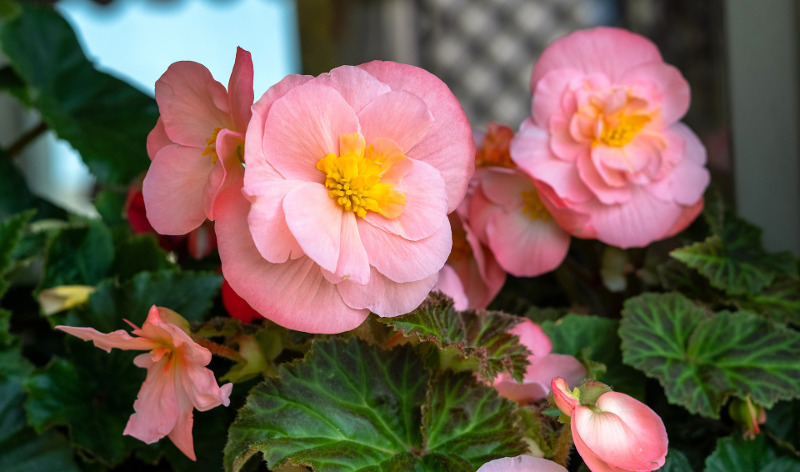Begonias can either bloom from late spring to late summer or from early summer to early autumn depending on the variety. If they are not producing buds, they may lack nutrition or be in a location where they receive too much or too little sunlight.

Common Reasons Why Begonias Aren’t Blooming
Assess the amount of sunlight your begonias are receiving. They may be receiving too much or too little sunshine. Move them to another location and see if they begin producing new buds in a couple of weeks. If you haven’t been regularly fertilizing your begonias, it’s time to start. If they have become leggy, prune them back. Begonias do not like soggy soil. Be careful not to over-water and always use a pot with a drainage hole for container gardens.
Does Pruning Begonias Help Them Bloom?
If your begonia has grown tall and spindly, pruning it back may encourage new growth and blossoms. Remove faded flowers to lessen the chance of them rotting and inviting disease.
Does Fertilizing Begonias Help Them Bloom?
Begonias are heavy feeders. They need to be fertilized regularly to thrive. Fertilize container-grown begonias every other week with a weak balanced liquid fertilizer. Top dress landscape plants with a balanced, granular, slow-release fertilizer monthly. Always water after adding fertilizer. Be careful not to over-fertilize, or you will promote leggy growth instead of blooms.
How Do I Get Begonias To Produce More Blooms?
One of the best ways to keep begonias happy and flowering is to plant them in well-draining soil. They also need the right amount of sunlight, moisture, and nutrition. Read the label on your plant to determine if it can handle full sun or shade conditions before choosing a spot to plant it. Allow the top couple of inches of soil to dry out between watering and fertilize regularly.
Why Aren't Begonia Blooming
- Poor drainage
- Improper sunlight exposure
- Fertilization needed
- Leggy growth that needs pinching back
 |
Author Janice Cox - Published 12-09-2021 |
